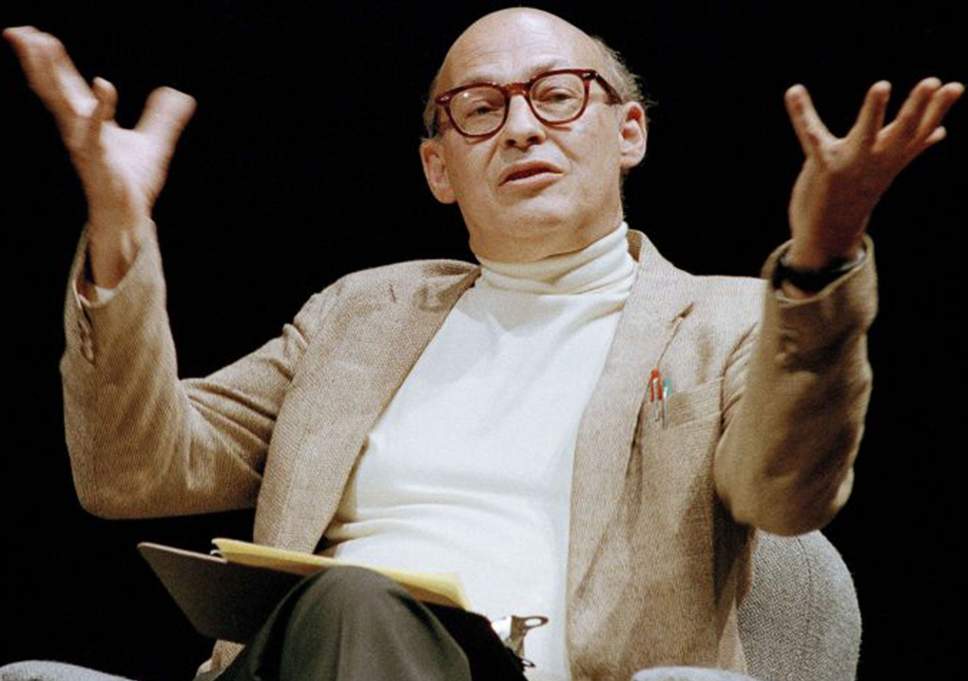
by Admin | Feb 19, 2021 | Chronicles, News
This week in The History of AI at AIWS.net – in 1967 Marvin Minsky was quoted saying, “Within a generation … the problem of creating ‘artificial intelligence’ will substantially be solved.”
Similar to H. A. Simon’s writings from the same era, Minsky’s prediction was stated in his work in the 60s, after the bloom of AI development in the advent of the Dartmouth Conference. Optimism was running high, and advocates and academics for AI envisioned a romantic vision of what it could be. However, his prediction did not come to fruition, as AI development suffered stagnations and the like, most notably the first AI Winter, whose beginnings ironically was contributed to by Minsky himself.
Marvin Minksy was an important pioneer in the field of AI. He penned the research proposal for the Dartmouth Conference, which coined the term “Artificial Intelligence”, and he was a participant in it when it was hosted the next summer. Minsky would also co-founded the MIT AI labs, which went through different names, and the MIT Media Laboratory. In terms of popular culture, he was an adviser to Stanley Kubrick’s acclaimed movie 2001: A Space Odyssey. He won the Turing Award for his impact on AI in 1969.
As with Herbert Simon, this quote was an event in the history of AI due to its display of the sentiments of optimism of the time. Furthermore, Marvin Minsky was one, if not the, most important figure in the development of Artificial Intelligence. His predictions about AI during its rise in the 60s are still discussed about to this day.
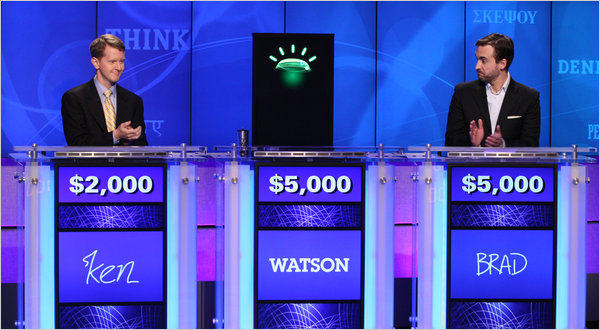
by Admin | Feb 12, 2021 | Chronicles, News
This week in The History of AI at AIWS.net – IBM “Watson” machine defeats 2 human Jeopardy! champions. The machine went on the show on February 16th, 2011 and faced off against Ken Jennings and Brad Rutter, previous winners of the famous game-show.
The show was taped in Janaury of 2011 but was not aired until February of the same year. Instead of a regular episode, this showdown was played out over three parts, concluding on February 16th. It was filmed at one of IBM’s research lab. More than just a publicity and PR display, it was a vindication of the progress Artificial Intelligence has made in the past decades.
“Watson” is a question-answering computer system, developed by IBM as a part of their DeepQA project. David Ferrucci, an American biologist and computer scientist, headed the development of Watson as principle investigator with a research team. Watson is named after IBM’s founder and first leader, Thomas J. Watson. After its success on Jeopardy, Watson was first utilised in helping lung cancer treatment at the Memorial Sloan Kettering Cancer Center in New York City.
The New York Times covered this event on its website. The article can be read here. A clip of Watson’s victory can be viewed here.
The HAI initative considers this an important development in the history of AI due to its publicity and notability as the culmination of a research project in artificial intelligence.
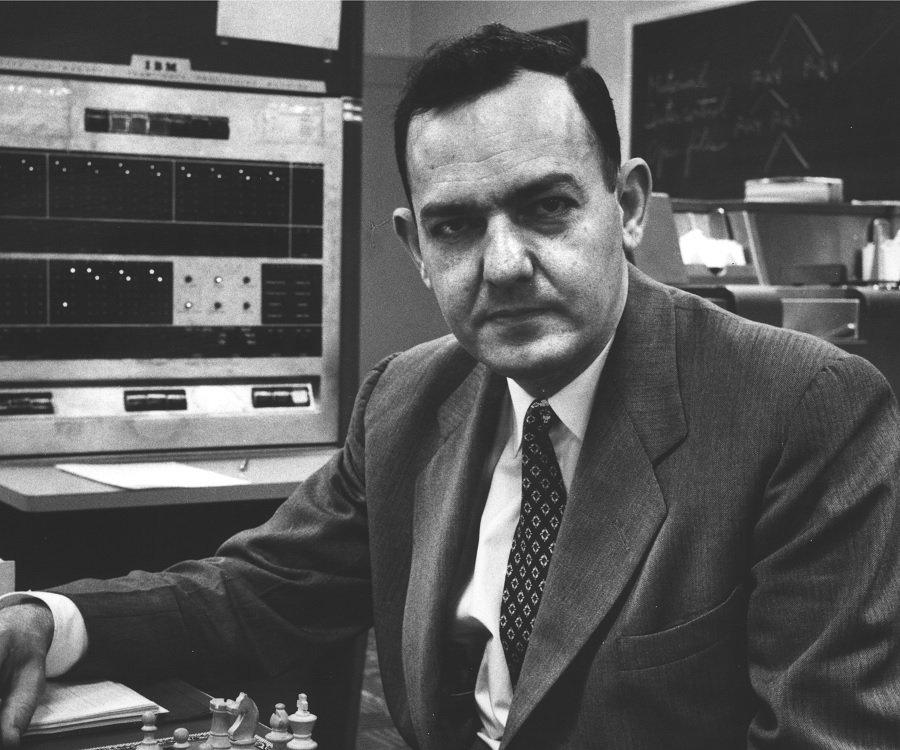
by Admin | Feb 5, 2021 | Chronicles, News
This week in The History of AI at AIWS.net – H. A. Simon was quoted with a prediction, “machines will be capable, within twenty years, of doing any work a man can do” in the 1960s. He wrote this in his “The New Science of Management Decision”
Herbert Simon was an American economist, political scientist, and cognitive scientist. In addition to Logic Theorist, he was known for research into decision-making in organisations and theories of bound rationality and satisficing. He worked at Carnegie Mellon University for the majority of his career. Simon received the Nobel Prize in Economics in 1978, and the Turing Award in 1975 for contributions to AI, human cognition, and list processing.
His prediction was stated in his work in the 60s, after the bloom of AI development in the advent of the Dartmouth Conference. Optimism was running high, and advocates and academics for AI envisioned a romantic vision of what it could be. However, his prediction did not come to fruition, as AI development suffered stagnations and the like.
This quote was an event in the history of AI due to its display of the sentiments of optimism of the time. Herbert Simon is also a notable found father of AI. His quotation is still deliberated about to this day

by Admin | Jan 29, 2021 | Chronicles, News
This week in The History of AI at AIWS.net – Unimate, an industrial robot developed in the 50s, becomes the first to work in New Jersey in 1961.
Unimate was invented by George Davol, who filed the patent in 1954. Davol met Joseph Engelberger in 1956, and the two paired up to found Unimation, the first robot manufacturing company. Davol and Engelberger promoted Unimate at The Tonight Show. Engelberger then exported industrial robotics to outside the US as well.
The Unimate worked at a General Motors assembly line at the Inland Fisher Guide Plant in New Jersey. The robot transported die castings from asssembly lines and welded parts on autos. It did this job because it was considered dangerous for human workers, due workplace hazards such as toxic fumes. The robot had the appearance of a box connected to an arm, with systematic tasks stored in a drum memory.
Although this machine was not directly connected to Artificial Intelligence, it was a precursor to developments in that field. By implementing a robot that can do tasks, this project was taking the first steps towards AI. Thus, the HAI initiatve considers this a milestone in the History of AI

by Admin | Jan 22, 2021 | Chronicles, News
This week in The History of AI at AIWS.net – Waseda University built WABOT-2 in 1984. A follow up to the WABOT-1 they built in 1973, this robot was also anthropomorphic, but improvements were made.
The WABOT-2 was a follow-up to the WABOT-1 project. This iteration can now play music of average difficulty on an electronic organ. It was now able to converse with another person as well. In addition, it now has a camera for its head. A contrast with WABOT-1 is that WABOT-2 is considered a “specialist robot” instead of a “versatile robot”.
After the success of WABOT-1 in 1973, Waseda University picked the project back up in 1980. The project developed by a study group at the School of Science & Engineering. The goal of this project was to create an anthropomorphic robot that could perform intelligent tasks such as performing music. Thus, WABOT-2 became more specialised, rather than the versatility of WABOT-1
Similar to the WABOT-1, WABOT-2 was mainly a robotic project. Still, the WABOT-2 helped develop AI in improving the WABOT’s ability to conversate. The HAI initiative considers this an event, as with the first one, in the History of AI due to its contributions to the development of AI.

by Admin | Jan 15, 2021 | Chronicles, News
This week in The History of AI at AIWS.net – Waseda University built WABOT-1 in 1973. It was the first full-scale anthropomorphic robot, with a climb-control system, a vision system, and a conversation system.
The WABOT-1 was the first of its kind. It was able to communicate with a person in Japanese, as well as measure distance and direction. WABOT (WAseda roBOT) was able to walk and grab objects. It had the mental faculty of a one-and-a-half-year-old child. The robot had the WAM-4 for its hands, and the WL-5 for its legs.
The WABOT project was initiatived at Waseda University in Tokyo, Japan in 1967. Development did not fully start until 1970, and was not finished until 1973. The project was under the direction of Ichiro Kato at the School of Science & Engineering. In the 80s, Waseda University would reiterate its works on WABOT-1 with a new robot, the WABOT-2.
While the WABOT-1 was a mainly robotic project, its conversation system creates for it an important connection to the field of AI. The HAI initiative considers this an event in the History of AI due to its contributions to the development of AI.
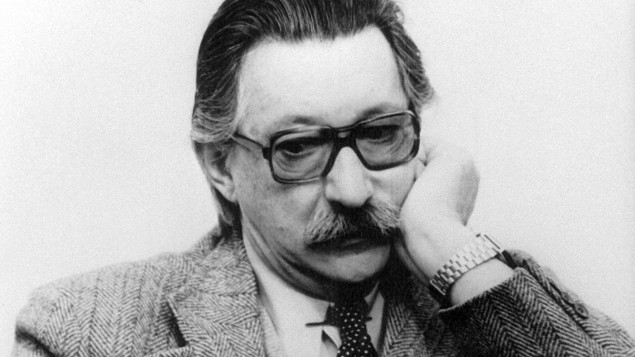
by Admin | Jan 8, 2021 | Chronicles, News
This week in The History of AI at AIWS.net – Joseph Weizenbaum was born on January 8th, 1923. Weizenbaum published the program ELIZA in 1966 which could mimic conversation with humans. Although Weizenbaum was considered a father of Artificial Intelligence, he criticised the field later in his life.
Joseph Weizenbaum was a German-American computer scientist. He was born in 1923 to Jewish parents in Germany and fled to the US in 1936. He studied at Wayne State University, which was interrupted by the outbreak of the Second World War, but he completed his B.S. there in 1946 and M.S. in 1950. He started working at MIT in 1964. There he developed ELIZA. In the 70s and 80s he casted some doubts on AI and computer, with his book Computer Power and Human Reason (1976) and an interview with MIT’s The Tech. In 2008, the International Society for Ethics and Information Technology established the Weizenbaum Award, named after him, for individuals that made significant contributions to information and computer ethics. Weizenbaum passed away in Germany in 2008.
ELIZA was a computer program developed at the MIT AI Lab between 1964 and 1966. It was named after the character Eliza Doolittle from the play Pygmalion by George Bernard Shaw. The program runs a DOCTOR script, and acts in the manner of a psychotherapist. ELIZA could simulate a conversation but wasn’t able to contextualised them. Weizenbaum’s purpose of developing the program was to demonstrate the superficiality of communication between humans and machines. ELIZA is one of the first examples of a chatbot.
Joseph Weizenbaum was a pivotal figure in the development of AI with his contribution of ELZIA. Thus, the HAI Initiative considers his birth to be a notable event in the history of AI.

by Admin | Jan 1, 2021 | Chronicles, News
Yesterday, the HAI board and initiative announced the HAI 2020 awards and nominations which can be read here in full.
This week in The History of AI at AIWS.net – the end of the first AI Winter in 1980. This was due to the adoption of “expert systems” into corporations in the 90s and Japan’s Fifth Generation Computer project.
Expert systems are computer systems that can emulate man’s decision-making abilities. They are designed to solve problems through reasoning and they can perform at the level of human experts. The first expert system was SAINT, developed by Marvin Minsky and James Robert Slagle. Lisp machines are designed to be able to run expert systems. Lisp machine runs the Lisp programming language, and in a way, it was one of the first commercial and personal workstation computer.
Japan’s Fifth Generation Computer program was created and funded by the Japanese Ministry of Trade and Industry in 1982. The goal of this program was to create computers with massively parallel computing and logic programming and to propel Japan to the top spots in advanced technology. This will then create a platform for future developments in AI. By the time of the program’s end, the opinion of it was mixed, divided between considering it a failure or ahead of its time.
The HAI initiative considers the end of the frst AI Winter as a significant marker in AI history. It ended the thaw in AI development and revitalised the field, leading to more pioneering and research. As we enter a new year, we would like to wish our readers a Happy New Year, and hope for the development of Artificial Intelligence to greater heights, as is what happened after an AI winter.
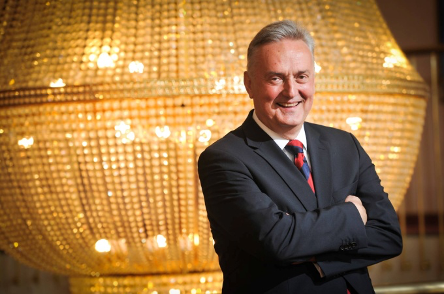
by Admin | Dec 30, 2020 | Chronicles
30.12.2020. Zlatko Lagumdzija
The History of AI event of 2020 – The Social Contract for the AI Age
Zlatko Lagumdzija
Former Prime Minister of Bosnia and Herzegovina
Member of World Leadership Alliance-Club de Madrid
Member of the History of AI Board
Social Contract for the AI Age can be named as the History of AI event of 2020 since it is offering transformative tools and means for creating complex elements and goals of great mosaic reflecting different perspectives in search for our prosperous and shared future.
Development of AI that is impacting our life and work with magnitudes bigger than any human invention in history is a clear sign of necessity and importance of a pioneering act such as the first Social Contract in the Internet and AI Age.
Fruits of Renaissance and Age of Enlightenment have been enjoyed by people because of great thinkers like Thomas Hobbes and Jean Jacques Rousseau who created the Social Contract concept as the leading doctrine of political legitimacy and platform for peace, security and democracy centuries ago.
Social Contract for the AI Age, as agreement among all stakeholders of society to work together for social benefit, is a comprehensive and impactful call to leaders to show wisdom and leadership using science and technology fruits in order to move our planet in the right direction.
Since September creation and adoption by 10 signatories coming from different backgrounds and experiences, under umbrella of the Boston Global Forum and AI World Society (AIWS), it has been endorsed, supported and called for implementation by the World Leadership Alliance – Club de Madrid and a long line of stakeholders from governments, academic, civil society and business leaders from various parts of the globe.
Social Contract for the AI Age is a pioneering, meaningful and impactful document since it is defining the purpose, vision and values that can be met by tools and means like AI is offering.
That is why Social Contract for the AI Age can help us to shape societies for a common purpose through transformative vision that transcends the technological features of AI and seeks to provide foundations for a progressive, new, better, and more prosperous society.
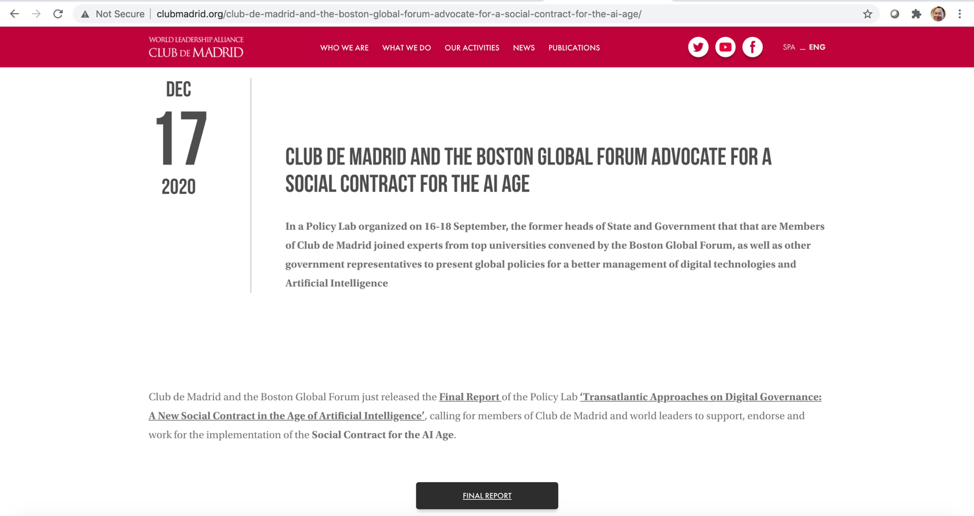
by Admin | Dec 20, 2020 | Chronicles
2020 was a special and eventful year, and yet it is ending, as we approach 2021. To cap off this memorable year, the History of AI Initiative at AIWS.net would like to receive your selections and choices for achievements, figures, and events in AI (including science technology, innovation, politics, policy, economy, cultures, society) in 2020:
- What are some historical achievements in AI in 2020?
- Who are notable and monumental figures in AI development in 2020?
- What are some pivotal events in AI history in 2020?
We would like to receive your selection before December 26, 2020. The History of AI Board will review your picks, then announce achievements, figures, and events of AI on December 31, 2020.
Please send your selection to [email protected]
Your selection will play an important role in this process. Thank you so much for your contribution.









